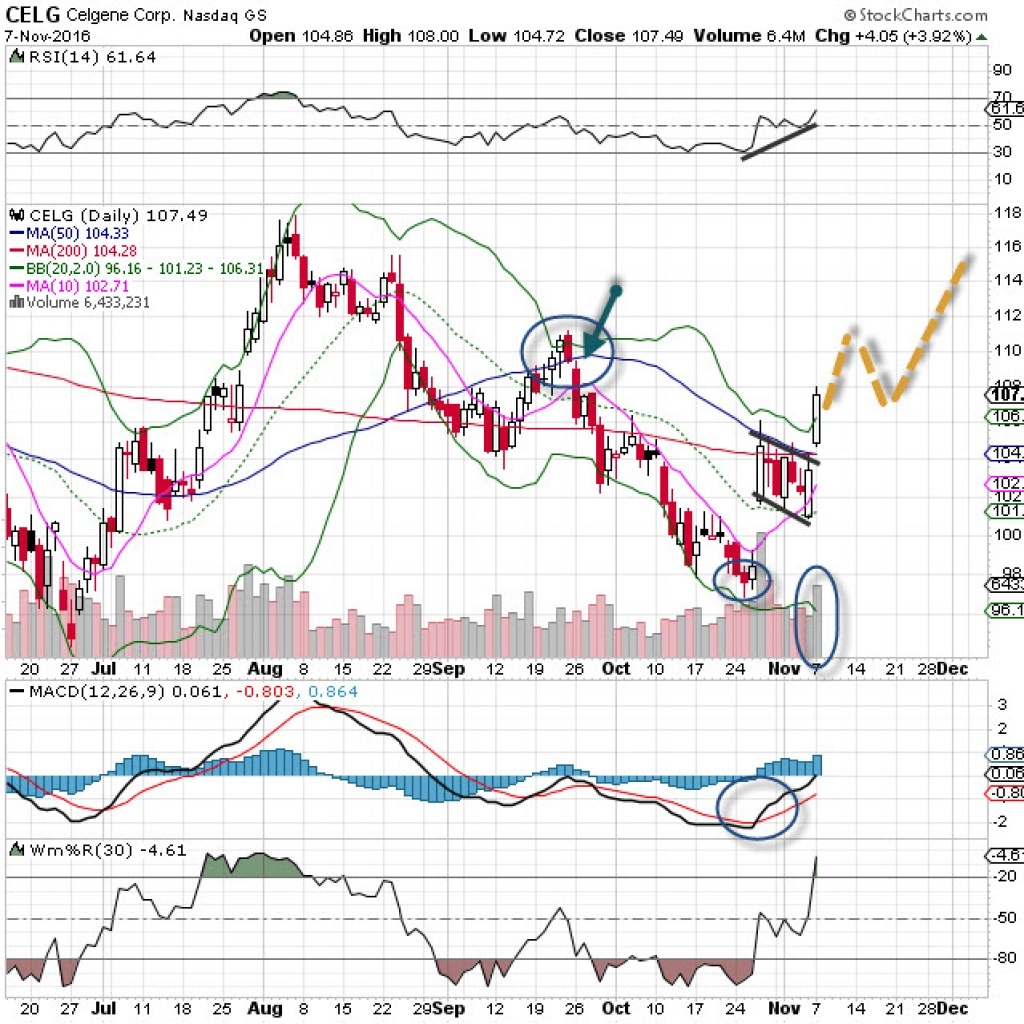Celgene is one of the most volatile biotech names out there, and it has been on a rollercoaster ride since peaking in early August. The stock got pounded in early fall when it appeared Hillary Clinton might win the election and potentially institute weaker pricing policies for biotechs like Celgene. That drop may have been a great chance to buy, as the stock was nearly cut by 20% but has moved sharply higher since earnings were released.
What we find attractive here is the “gap ‘n hold” pattern. Resistance is just ahead around the 110 level, and it may pull back some from there, but a strong MACD buy signal has been confirmed. Additionally, momentum is very good and relative strength has improved greatly. We could see a move back to the August highs very soon, so keep your out for a pullback – it will be a “buy” opportunity.
Celgene (Nasdaq: CELG) Video Chart Analysis
Take a deeper dive into the chart action on tech stock Nasdaq: CELG and learn how to read the technicals. Get Bob Lang’s full analysis as he marks up our chart of the week.
Love what you’re learning in our market analysis? Don’t miss a single video! Get the latest chart action delivered directly to your inbox every week as Bob breaks down stocks to watch and potential trade options!
About Celgene
Celgene Corporation discovers, develops, and commercializes therapies to treat cancer and inflammatory diseases worldwide. It markets REVLIMID, an oral immunomodulatory drug for multiple myeloma, myelodysplastic syndromes (MDS), and mantle cell lymphoma; ABRAXANE, a solvent-free chemotherapy product to treat breast, non-small cell lung, pancreatic, and gastric cancers; POMALYST/IMNOVID to treat multiple myeloma; and OTEZLA, a small-molecule inhibitor of phosphodiesterase 4 for psoriatic arthritis, psoriasis, ankylosing spondylitis, Behçet’s disease, atopic dermatitis, and ulcerative colitis. The companys products also include VIDAZA, a pyrimidine nucleoside analog to treat intermediate-2 and high-risk MDS, and chronic myelomonocytic leukemia, as well as acute myeloid leukemia (AML); THALOMID for the patients with multiple myeloma and erythema nodosum leprosum; ISTODAX to treat cutaneous and peripheral T-cell lymphoma; and FOCALIN, FOCALIN XR, and RITALIN products.




















